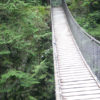The maritime winds persisted off of the Atlantic Ocean and onto the southern peninsula of Iceland — where the cliffs of Valahnúkamöl are located — causing the air to have a nippy and slightly uncomfortable chill to it…
Valahnúker Mountain and the Cliffs of Valahnúkamöl in Iceland

…which felt significantly different than the weather over at Miðlína, at which there is a literal bridge between the North American and Eurasian continental plates only slightly greater than a mere five miles away. Valahnúkamöl Cliffs is also within walking distance of Reykjanesviti, which is the oldest lighthouse in Iceland.

The cliffs of Valahnúkamöl appear to have weathered centuries of harsh conditions. In fact, the cliffs of Valahnúkamöl were created by powerful storms, high waves and pounding surf. Lower down is a diagonal layer of breccia, which forms when slag or ash form angled slopes. Individual pillows or parts thereof roll down the slope, are covered with ash, and form the layer of breccia.

Guano dots the face of this cliff — as well as the surrounding rocks and ridges — from assorted sea birds who cling to it.

The sea was rough at times, ebbing and flowing.

Pillars of rock jut up from the sea — almost as though they were standing guard of the rocky sandless beach…

…but the sea fights back every chance it gets, wave by wave by punishing wave.

When the sun peaks through the clouds, the rich colors of the ocean and rock appear.

The scenery is all a matter of perspective — literally.

The ridge at Valahnúkamöl is approximately 1,378 feet long, 263 feet wide and 33 feet high.

Eldey Island — which is where the last documented pair of Great Auks was killed on Monday, June 3, 1844 — can be seen off in the distance on the horizon…

…and it is occasionally obscured by the wild white splashes of the sea.

One of the most common types of lava in the world as it is the most common lava that erupts from the oceanic crust, strange “pillows” known as pillow lava form in eruptions under water or under glaciers — often where the pressure is too high to allow steam explosions to occur. They can also form when there is little or no gas in magma which rapidly pushes out from flowing lava. A glassy coating forms over the “pillows” as the magma cools rapidly. They are often several metres in length but only between 10 centimeters and 30 centimeters in diameter. When examining a cliff wall with a cross-section of pillow lava, each bulbous formation looks like a ball or a pillow. The pillow lava at this particular location probably formed in a sub-glacial eruption.

I noticed one person walking up towards the top of the cliff, which is composed of layers of tuff — which is a mixture of lava rocks and hardened volcanic ash — pillow lava and breccia; and it was formed in a single eruption. Evidence of the different phases of the eruption are shown on it, as the tuff forms during an explosive eruption, while the pillow lava forms when the lava erupts under water.

Another person soon followed him.

Tuff layers form when lava as hot as 1,200° Celsius rapidly cools in water, which forms glass fragments, as crystals do not have time to grow. The fragments quickly transform into tuff.

…to

Three people casually admire the view from up near the top — and take some pictures of that view as well as each other.

The weather literally changes every few minutes at Valahnúkamöl.

Is there not any place in the world safe from someone using a portable electronic device?

I walked up the ridge myself — and it is a fairly easy climb for most people.

The green object — which is located off to the right of the center of the photograph shown above — is a sculpture of a Great Auk, whose height was typically 30 to 33 inches and weight at approximately eleven pounds. Please refer to this article which I wrote for additional information pertaining to the sculpture and the extinct bird itself.

This is one of the breathtaking views one can see from near the top of the ridge.

Some parts of the landscape appear…well…otherworldly.

The surf continuously pounds the coast to this day, as it has done for centuries — still shaping the landscape.
Summary
This is definitely a place worth visiting; and highway 425 will get you there, as it is located only 29 minutes south of Keflavik International Airport.
There are no facilities and no admission fee to enjoy the cliffs of Valahnúkamöl, where you can stay as long as you like, as it is technically open 24 hours per day, 365 days per year.
All photographs ©2018 by Brian Cohen.

